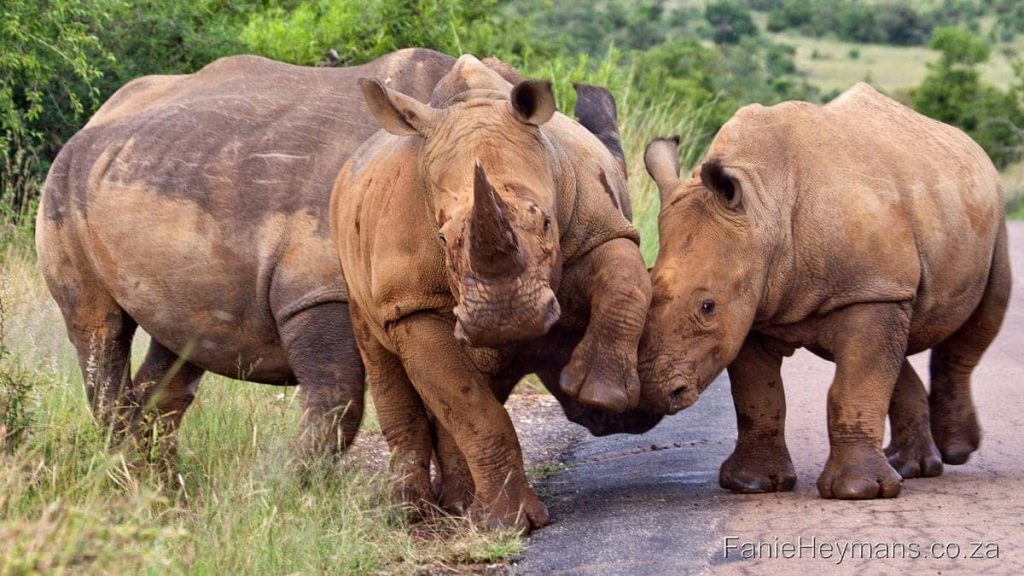Pilanesberg Wildlife National Park South Africa
Pilanesberg is a Wildlife Game Reserve that is situated in an extinct volcanic crater, northwest of Johannesburg in South Africa. With wooded valleys, beautiful grasslands it is home to the Big Five and many antelopes and abundant birdlife.
Mankwe dam, is a man-made lake, and is one of the main attractions in this park. There is a large hide at Mankwe dam, that have enough space for several photographers. The hides at the different dams makes the visit to Pilanesberg more interesting. There are 2 main rest camps at Pilanesberg namely Bakgatla and Manyane. We stayed at Manyane rest camp in the Safari Tents. It is very comfortable and well equipped.
On our first day in the park, we were lucky to see a lot of antelope like Zebra, Springbuck and Blue Wilde Beast.
Zebra
Zebra Foal Playing. Newborn zebras are fairly self-sufficient. Like their mothers, baby zebras will be stripped from birth. This small Zebra foal entertained us for quite some time, and we had several good laughs for its funny moves. Young Zebras are nursed by their mothers for up to 1 year.
Zebras are native to Africa; zebras are distinctive single-hoofed mammals that live in herds. Also known as the “striped Donkey”, the Burchell’s Zebra stripes and markings can act in the same way as human fingerprints. They are very closely related to the horse family.
Black-back Jackal
Black-backed jackal walking in the early morning rain in Pilanesberg Wildlife Reserve. The black-backed jackal, also called the silver-backed jackal, is a medium-sized canine native to eastern and southern Africa. They are red-brown in colour with a black saddle on their back and their tail is long and bushy.
This Blacked Backed Jackal were walking in the wet grass. The cooler, rainy weather seems to make the animals to be in a very cheerful and playful mood. They were much more visible and active than on the warmer days, when it is difficult to spot them at noon. They are extremely cunning and very adaptable.
Rhino
Two white Rhino’s bumping heads in the middle of a gravel road. Rhinos are endangered species.
On the Sunday afternoon, we were lucky to stumble upon a mother Rhino with two calves at Pilanesberg. The two calves were head banging and playing for about half an hour, before disappearing in the thicket.
Playing on a road with mother in background. These mammals are easily recognized by their prehistoric features and the horns on their forehead.
On our second day we were surprises with excellent wildlife photographic opportunities when a white Rhino appeared next to the road. It was peacefully grazing, without being disturbed by our presence. We had the Rhino all to ourselves for 30 minutes before it disappeared into the shrubs and dense Acacia trees.
Elephant
Elephant walking on gravel road in Pilaansberg. African elephants are the largest land animals on Earth
We also saw a large variety of wildlife animals in the park and were really surprised about all the species found in the park. Here we photographed an Elephant, as he was walking down the road. He did not like it that we were seemingly blocking its path. We reversed our vehicle, to leave sufficient space for him to move. We then turned around and he settled down.
Elephant are largest land mammals in the world. weighing up to 6000kg and measuring up to 3.3m at the shoulder.
Warthog
Warthog, Phacochoerus-africanus found in grassland, savanna, and woodland in sub-Saharan Africa.
This mother and baby Warthog were walking in the Pilanesberg wildlife camp, grazing on the green grass of the campsites. She is very tame and even took an apple from Annette, and lay down in front of our Safari tent, feeding the baby. What an awesome experience to see them at such close range, and interact with them in such a special way. Unfortunately, we did not see any of the big cats, i.e. lion, leopard or cheetahs, but it was still worthwhile visiting this park.
Blue Wildebeest
Wildebeest Baby and mother at a water hole in Pilaansberg
Blue Wildebeest Babies are born tawny brown, and begin to take on their adult coloration at the age of two months. Calves remain close to their mothers for a long period, and may continue suckling until the next year’s calf is nearly due.
The real big attraction to the Pilanesberg Wildlife National Park, is the bird life. There are several hides at the water for the bird lovers, and there are plenty bird species to photograph.
Birdlife
Rufous-napped Lark
Rufous-napped Lark on a rock singing. A large, robust rusty lark with a short crest is widespread across sub-Saharan Africa, especially in the east and south.
Brown Francolin
A large Brown Francolin with some darker streaks, dark blackish legs, and a distinctive bare red face and throat.
Red Billed Oxpecker
Red-billed oxpeckers perch on large wild animals and domesticated cattle. The red-bill devotes its day to plucking insects and ticks from its hosts
Forest Canary
Red-billed oxpeckers perch on large wild animals and domesticated cattle. The red-bill devotes its day to plucking insects and ticks from its hosts
Greater Striped Swallow
Greater Striped Swallow on branch. (Also known in Afrikaans as “Grootstreep swael”). Hirundo cucullata. This swallow is a common intra-African migrant.
Red Bishop
Southern red bishop. A small, dumpy sparrow-like weaver. 12cm long and has a thick, conical bill.
European Bee-eater
European Bee-eater waiting for insects
White-throated swallow
The white-throated swallow builds a bowl-shaped mud nest
Check out some more of my photos at 500PX and PhotoPixSA and the Trip Reports and Hiking Trails



















